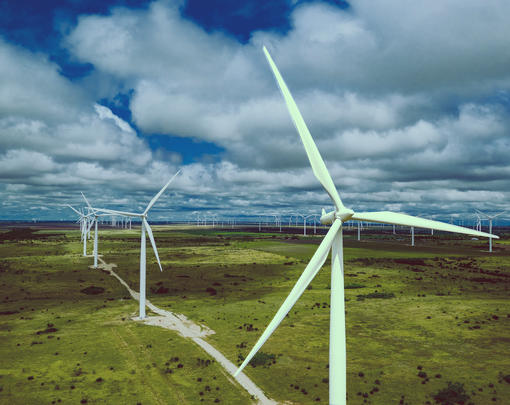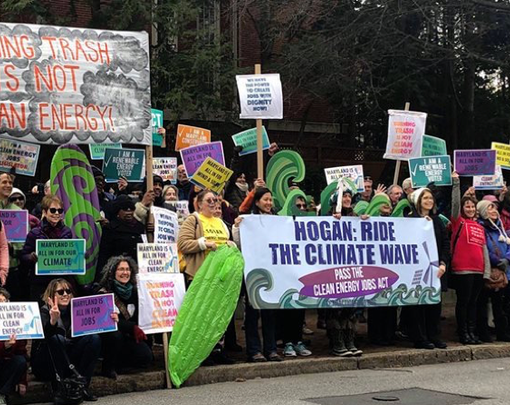Last month’s vote in the Senate on a Green New Deal resolution was a waste of time, an attempt by the Republican leadership to jockey Democrats into a supposedly embarrassing vote that nearly all of them in the end sidestepped by voting “present.” But the exercise did show how some politicians intend to signal support for addressing climate change without embracing the systemic changes the Green New Deal demands.
Welcome to the world of “realistic solutions.”
They were touted during Senate debate on the Green New Deal by people like Sen. Angus King, a Maine independent who usually caucuses with the Democrats. He voted no on the resolution, sponsored by Sen. Ed Markey (D-Mass.) and in the House by Rep. Alexandria Ocasio-Cortez (D-N.Y.), because, he said, the policy focus should be to “increase investments in green energy—including research and development—to create price parity with carbon.” Democratic Sen. Kyrsten Sinema of Arizona issued a statement after the vote saying we should “address a changing climate with realistic, achievable solutions.” Republicans who wanted to rhetorically distance themselves from the climate-change deniers to their right made similar statements.
If Senate Democrats that day weren’t preoccupied with denouncing Republican political gamesmanship, you would have likely heard even more evidence of a strong Democratic “realistic solutions” caucus. It would sound like the New Democrat Coalition call for “market-driven climate initiatives that carry political weight,” such as a cap-and-trade system that allows corporations to buy the right to pollute, or the viral confrontation Sen. Dianne Feinstein (D-Calif.) had with a group of children from the Sunrise Movement, during which she indicated support for “real, meaningful climate change legislation” but declared the Green New Deal “will not pass the Senate, and you can take that back to whoever sent you here and tell them.”
The world of “realistic solutions” to climate change revolves around the sun of the free market. Their success depends on getting the cost of renewable energy resources below that of fossil fuels, in part through incentives and investment in renewables and technological innovation.
The problem is that the energy market is not a free market.
The fossil fuel industry has benefited from market-distorting incentives for decades. That starts with the familiar breaks and subsidies in the tax code, which alone are estimated to have enabled almost half of the U.S. discovered oil fields to be economically viable. There are also numerous “hidden” incentives, such as the below-market-value royalties and lease contracts (which for the coal industry have cost taxpayers an estimated $30 billion over 30 years) and the research and development investments on such projects as carbon capture and sequestration, (designed to enable fossil fuel companies to keep extracting oil but which critics have said would not become feasible in time to meet generally accepted global warming targets). Add to those the well-known “externalities”—costs related to fossil fuel activities that aren’t paid by companies but rather by individuals and governments in the form of hospital bills, contamination sites, and extreme weather events, just to name a few.
The industry also benefits from the very fact that American power infrastructure, such as transmission and distribution grids, is built around centralized fossil fuel sources, not decentralized sources such as solar and wind. The same is true for existing fossil fuel generation facilities, for which investments are often made based on a three-decade return expectation. Early retirement of these facilities would be seen as a missed earning opportunity (even if that means ignoring sunk costs just to cover the marginal cost of production). Finally, we cannot ignore how CEO compensation at the energy majors is structured to promote increased fossil fuel production and does not generally incentivize the expansion of renewables.
When the supply and demand curve seems to start working in favor of renewables, the Trump administration has intervened in the market to protect the fossil-fuel industry’s profit potential. In just the past year, the administration sought to allow power plants to pass onto consumers the full operating costs of their plants if they have at least a 90-day supply of fuel available (a standard that can only be met by coal and nuclear plants and would keep inefficient plants from shutting down), use a Cold War statute to offer loans or purchase commitments to help failing generation facilities (again supporting coal), and is proposing to offer leases for new offshore oil drilling sites “under favorable terms that will be difficult for future presidents to revoke or rewrite”—or future markets to correct.
Even setting aside the slanting of the market in favor of fossil fuels, there is no historical evidence that the free market can solve the climate crisis on its own—and certainly not within the 11-year timeframe called for by the Intergovernmental Panel on Climate Change. In 2017, the U.S. invested around $40.5 billion in renewables but it was still the world’s top oil and gas producer, surpassing traditional oil countries such as Russia and Saudi Arabia. And this is not unique to the United States. As the International Energy Agency explained in its 2017 Global Energy & CO2 report, even with renewables enjoying the “highest growth rate of any sources,” fossil fuel remains for more than three decades a flat 81 percent of the global energy mix.
The general public might not know these details, but it is hard to imagine that members of Congress aren’t aware of the not-free market in energy; many of the free market flaws were enabled through congressional legislation in the first place. So instead of “realistic solutions” based on a free-market fantasy, how about grappling with what’s really real: the need, for the sake of the planet, to dismantle the system that encourages profiting from fossil fuel extraction. That means ending fossil fuels incentives, leases, licenses, and financing, but it also means rethinking the way we own, control, and structure our society and institutions so we are no longer reinforcing an extractive political economy.




